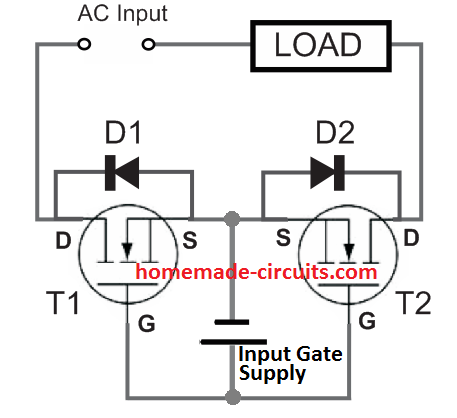Piet de Pad
Junior Member level 2
Dear Readers,
Inverters are switched off during a blackout and make that you have electricity on your roof while being without it in your home. This may not be as urgent where you live, but in countries like Mexico, blackouts are more common. In such a case, I want to be able to use the electricity from the solar panels to generate 120Vac for the house.
I want to connect the solar panel between two different systems, namely a micro inverter and a backup system. The switching between these two systems must be automatic. I assume modern solar panels can produce 550W STC at around 40V and 15A. How can we switch solar panel outputs was my question?
1) The first thing that comes to mind is a relay that can switch 15A - 40Vdc and is equipped with either SPDT or DPDT contacts. Such relays exist, but DC arcing makes them large and not cheap, at least from what I have been able to find.
2) Another possibility is SSR relays, but they only come in SPST configuration and have a voltage drop of 1..2V. They are suitable for string configurations but not for a single panel, as they result in significant power loss per panel, and they need cooling.
3) The remaining option is a MOSFET DPDT switch. MOSFETs come in various types and sizes, have a low RDSon, they can switch large currents at high voltages, and are not affected by arcing and contact aging. However, to my knowledge, such a switch does not exist as a ready-made product in the market.
This is roughly the decision-making process I went through, and I have decided on the last option. I have designed a DPDT switch that can be controlled with a dry contact. Below, you can see the design that I tested in MultiSim Spice.
At the bottom left under Pan2, you can see schematically what the circuit on the right does. The circuit is essentially a DPDT switch consisting of two SPDT switches which are simultaneously controlled. The switch referenced "switch" in the schematic represents the dry contact that switches one of the two systems. T13 T14 T23 T24 control the gates of the MOSFETs.
This is my question:
Before I proceed with building this, I would like to know if there are people who have other or better ideas on how to make a solar switch. Perhaps people have experience with what I describe here. Maybe someone knows a product in the market that does this. If you know a product I would like to hear it. If you have better ideas, please let me know.
Hope to see some reaction, thanks.
Piet de Pad

Inverters are switched off during a blackout and make that you have electricity on your roof while being without it in your home. This may not be as urgent where you live, but in countries like Mexico, blackouts are more common. In such a case, I want to be able to use the electricity from the solar panels to generate 120Vac for the house.
I want to connect the solar panel between two different systems, namely a micro inverter and a backup system. The switching between these two systems must be automatic. I assume modern solar panels can produce 550W STC at around 40V and 15A. How can we switch solar panel outputs was my question?
1) The first thing that comes to mind is a relay that can switch 15A - 40Vdc and is equipped with either SPDT or DPDT contacts. Such relays exist, but DC arcing makes them large and not cheap, at least from what I have been able to find.
2) Another possibility is SSR relays, but they only come in SPST configuration and have a voltage drop of 1..2V. They are suitable for string configurations but not for a single panel, as they result in significant power loss per panel, and they need cooling.
3) The remaining option is a MOSFET DPDT switch. MOSFETs come in various types and sizes, have a low RDSon, they can switch large currents at high voltages, and are not affected by arcing and contact aging. However, to my knowledge, such a switch does not exist as a ready-made product in the market.
This is roughly the decision-making process I went through, and I have decided on the last option. I have designed a DPDT switch that can be controlled with a dry contact. Below, you can see the design that I tested in MultiSim Spice.
At the bottom left under Pan2, you can see schematically what the circuit on the right does. The circuit is essentially a DPDT switch consisting of two SPDT switches which are simultaneously controlled. The switch referenced "switch" in the schematic represents the dry contact that switches one of the two systems. T13 T14 T23 T24 control the gates of the MOSFETs.
This is my question:
Before I proceed with building this, I would like to know if there are people who have other or better ideas on how to make a solar switch. Perhaps people have experience with what I describe here. Maybe someone knows a product in the market that does this. If you know a product I would like to hear it. If you have better ideas, please let me know.
Hope to see some reaction, thanks.
Piet de Pad

